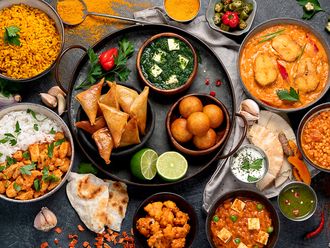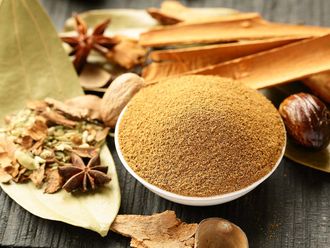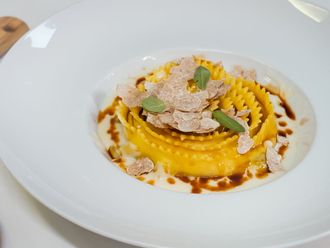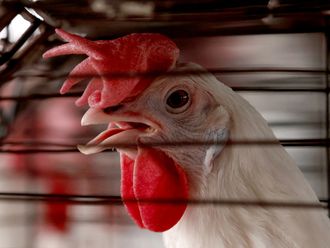
While enjoying my freshly brewed pot of karak chai recently, I realised that perhaps when Chinese emperor and renowned herbalist Shennong sat beneath a tree to rest on his trip to a far land, little did he expect his drink that day would pave the way for a culture of sipping, tasting and appreciation….
I’m talking about tea here. And this little tale surrounding Shennong is from nearly 5000 years ago.
He was apparently quite particular about the way he was given his water – boiled and rid of impurities. So when his servants began to boil the water, all it took was a sudden gust of wind, which caused a leaf from a nearby camellia sinensis plant or tea plant, to fly into the pot, changing the once colourless liquid into a light brown. Talk about timing, right?
While this was unnoticed at the time by those serving the emperor, one sip was all it took for Shennong to title the drink as cha, which means tea in Chinese. Although this is just a legend spoken of in China, the verified origins of tea remain obscure.
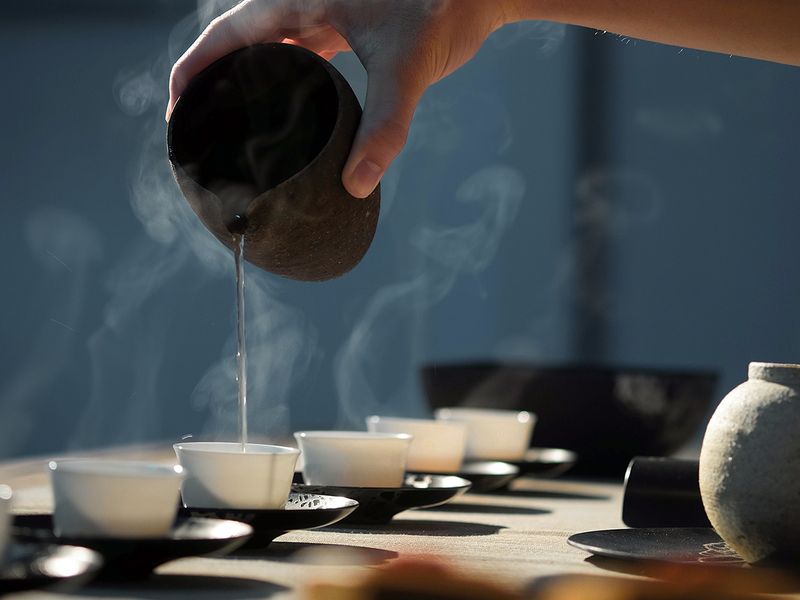
Over millennia, tea soon found a place for itself among Buddhist monks from Japan who travelled to China to study. However, it was quite slow to reach Europe and is claimed to have been introduced by Portuguese traders and missionaries who resided in the East, during the latter half of the 16th century. However, it was the Dutch who started commercially importing tea at the time. And soon enough the drink rose to popularity and was exclusively consumed by the wealthy, due to its high price.
But for tea to arrive in Britain, all it took was the wedding of Charles II to Catherine of Braganza in the 17th century, a Portuguese princess, who was an ardent fan of tea. Since the British East India Company had already monopolised the imports and exports with other countries, they were the first to import an order of 100 lbs (45 kg) of Chinese tea to the UK. From thereon, tea drinking got a wider presence, especially as they took it to the colonies of the British Empire.
In the West, tea was served using the best silver strainers, porcelain pots and teacups. In fact, it became widely popular in the Americas, especially in the colonies, which were largely influenced by the Tea Act of 1773. This was imposed by the British East India Company (EIC) to gain monopoly over tea sales in America by selling it at an inexpensive rate when compared to other tea importers and smugglers. This soon led to the revolutionary Boston Tea Party – a protest which led to America boycotting the tax imposed by the EIC.
When tea finally made its way to India, the first English tea garden was set up in 1840, by the East India Company in Chabua in upper Assam, which is also home to the one of the best tea in the world – the Assam tea.
Soon after this, people and their love for tea expanded as quickly as time passed. Several countries gained independence, modernisation took its form and newer forms of tea took its place in tea salons. Once that was done, understanding your cup of tea took a new turn with principles, rules and even styles of drinking.
Understanding your tea: The basics

Food by Gulf News was able to get in touch with Taha Bouqdib, President, CEO and co-founder of TWG Tea, a Singaporean luxury tea chain and Susmita Das Gupta, an expert tea artist based in India, who weighed in on the topic with their expertise.
“Through the years, various tea cultures grew and the concept of afternoon tea became popular throughout Europe in the 1970s, accompanied by an assortment of, scones, muffins, jams and clotted cream. Today, tea is the world’s most popular beverage after water. Production numbers four million tons every year and at the latest count, 15,000 cups are drunk every second all over the world. Tea appreciation has also become an institution on its own with well-travelled customers demanding for better quality teas and experience. The specific variety of tea plant and the way the leaves are processed after harvesting determine the type of tea that is created,” said Bouqdib.
To understand the basics of tea, you must first understand the types of teas available. With over 800 varieties of tea available, getting to the perfect choice for you can be a tough call to make. But when it comes to tea, the first thing to keep in mind is that tea leaves and tea dust are completely different from each other. And that’s rule number one.
“There are five primary types of teas – black, white, green, pu-erh (pronounced “pu-ah”) and oolong. All of these are made using the leaves, which is the standard definition of drinking ‘tea’,” said Gupta. “Each of these teas have a distinct flavour and can be identified from a light to dark range, based on aroma, strength and hues.”
Often confused with these five major types are herbal teas and infusions. Both of which – again – are totally different from each other.
Herbal tea or tisane
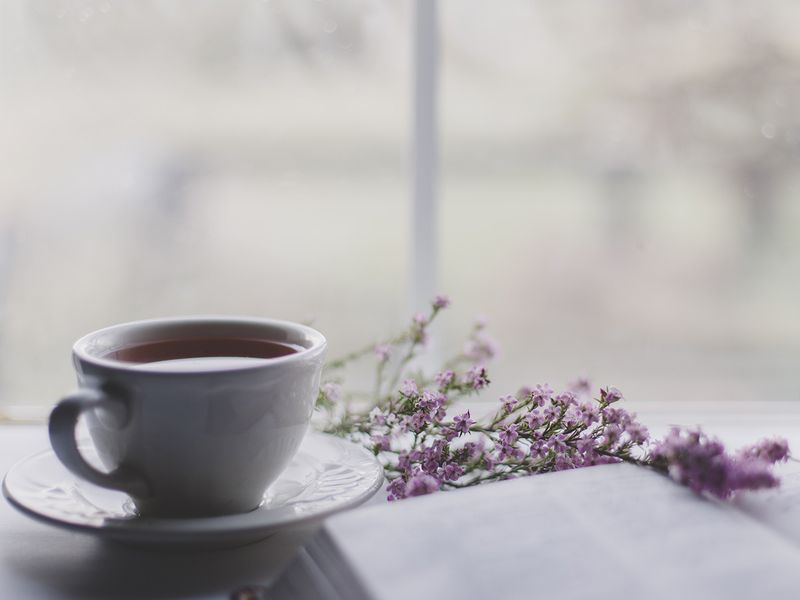
Herbal teas or tisane (pronounced “tuh-zayn” in French) do not use tea leaves although their name would tell you otherwise. These caffeine-free beverages are made from anything other than a tea plant. “It could be a root, a bark, a flower, or a stem,” said Gupta.
Sometimes, fruits, seeds or even spices could contribute to making the perfect herbal tea. You could also combine all the different parts of a plant to make the perfect tisane. Most of the time, tisanes are prepared by an infusion or a decoction.
What’s the difference?
Infusions are those in which boiling water is poured over the plant matter, whereas decoction is when you place the plant matter in boiling water, which in turn, releases more flavour and oils into the tea or tisane. The process of making an infusion is called steeping.
However, brewing times do differ. Some may be as short as two minutes, whereas some could take almost 15 minutes to perfect. In case your tisane does come with a few instructions to brew, follow them and adjust according to your tastes. And that’s rule number two.
Not to mention, avoid using an aluminium pot to brew your tea, since it is a highly reactive metal and could result in a toxic beverage.
To summarise, anything boiled makes herbal tea. Even the famed kombucha you’re fond of.
But, of course, another layer of difference is there when it comes to flavoured tea. “It [flavoured tea] is brewed using a mix of tea leaves and herbal tea,” said Gupta.
The science of steeping: The longer tea sits, the stronger it gets
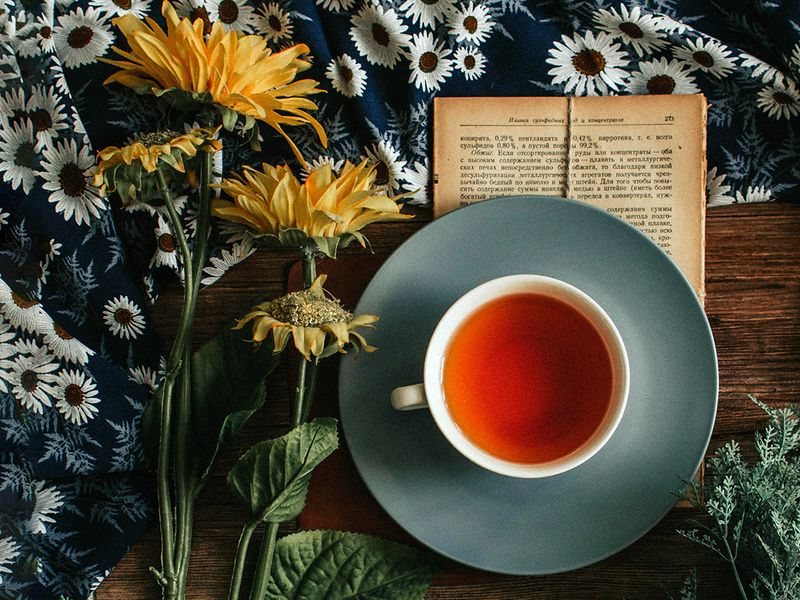
Coming back to steeping, the longer you let your tea leaves or bag sit in your cup, the stronger it gets. While this is great in terms of flavour for most types of tea, there could be a different algorithm altogether for tea when it comes to shelf life. “Only pu-erh tea fits the criteria in terms of shelf life, because most teas can only last 18 months in its authentic form. The older it gets, the tastier it is… and that’s the beauty of it,” said Gupta.
And nevertheless, there is a science behind steeping your tea to perfection.
Since black, green, white and oolong tea come from the same plant, they are often processed differently. And by processing, we mean the way it’s made before serving it as tea. Green and white teas are comparatively less oxidised when compared to oolong and black tea. They are often heated to keep it dry – this limits the oxidisation process.
For black and oolong teas, they are often left exposed to oxygen and are then dried creating a chain of chemical reactions, which also determines their distinct colour and flavour.
When the leaves are submerged in water, the compounds present in the leaves permeate into the liquid – a process known as osmotic diffusion. But of course, water plays an essential role as well when it comes to making your tea. And that’s rule number three.
“To preserve the unique characteristics of each variety of tea, it is essential to use only filtered water. Undoubtedly, the best tea infusion is prepared with ‘soft’ water, since a high calcium content gives rise to deposits on the surface of the cup.

It is essential to monitor the maximum temperature of the water, and never allow it to boil, since at 100°C (212°F), the dissolved oxygen content – essential in bringing out the flavour of the tea – will be lost. Instead, it is preferable to heat cool water until it simmers at a maximum temperature of 95°C (203°F). Simmering water will promote the taste and aroma of the tea leaves, developing the full complexity of the flavour of each variety of tea.
“The temperature at which it should be infused also varies according to the type of tea. For the highest-grade white teas, yellow teas and green teas, the water should be heated to 70°C (158°F). For other varieties of green teas, blue teas, black teas, matured teas and red teas, the water should be between 90°C (194°F) and 95°C (203°F) in temperature,” said Bouqdib.
Coming to infusions, it’s all about time. The Chinese and Vietnamese take a maximum of 30 to 60 seconds per infusion, whereas the Japanese have a prolonged period of infusion, which ranges between one to four minutes. Rule number four.
“The tea leaves should be left to infuse from two and half to fifteen minutes, depending on its type. Generally, white teas should be infused the longest – up to 15 minutes for the finest-grade teas, and around seven minutes for other varieties. The finest quality green teas should be infused for up to two and half minutes, whereas other varieties of green teas can be infused for up to three minutes. Blue teas should be infused from four to seven minutes. Black teas, matured teas and red teas can be infused, generally, for up to three minutes,” added Bouqdib.
2. Place one teaspoon or 2½ grams of tea per cup into the filter, allowing the tea leaves time to expand.
3. Gently pour simmering water on the tea, completely covering all of the leaves.
4. Infuse the tea for a suitable length of time, depending on the variety of tea used.
5. Remove the filter with the tea leaves so that the infusion remains consistent from the first cup to the last.
6. Stir the tea to distribute the tannins throughout the teapot before pouring.
7. Allow fine harvest, single-estate teas to cool for a few minutes before serving, so as not to burn the tongue, in order for you to enjoy the full palette of flavours.
The agony of the tea leaves
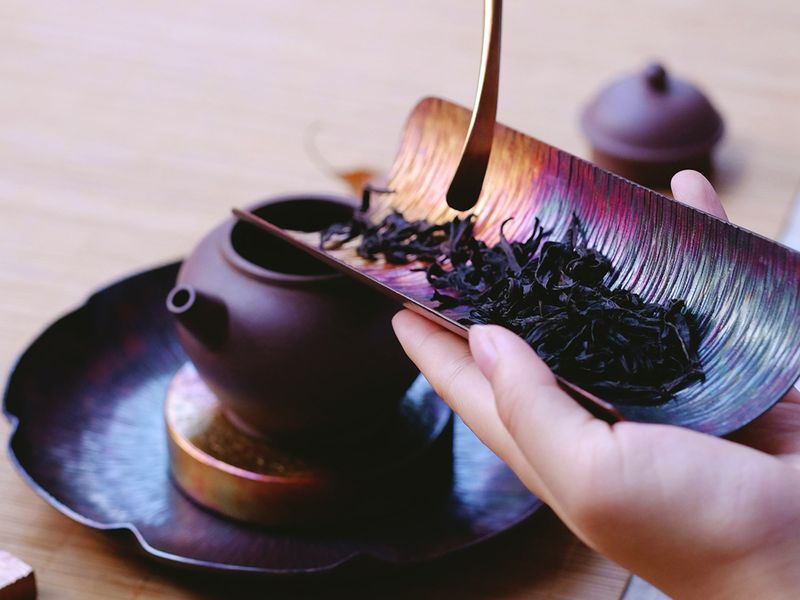
For tea connoisseurs this term is quite popular in their lexicon. But for those of us who are still in the process of getting to know our teas better, this is a term used to describe the unfurling of tea leaves during steeping. So, here goes rule number five.
Although the term sounds quite dramatic, it plays an essential role in brewing your tea to perfection. So, in case you use a tea bag, the unfurling of the leaves will be restricted and it will compromise the quality of the tea made, as the leaves permeate less into the water.
“Never boil water first and then add the tea leaves. It always has to be the other way around – pour the water onto the tea leaves,” said Gupta.
The tea leaves are often in a dried and shrivelled manner. When the leaves unfurl in water, it looks as if they are in agony. Hence, the term.
Adding milk to your tea
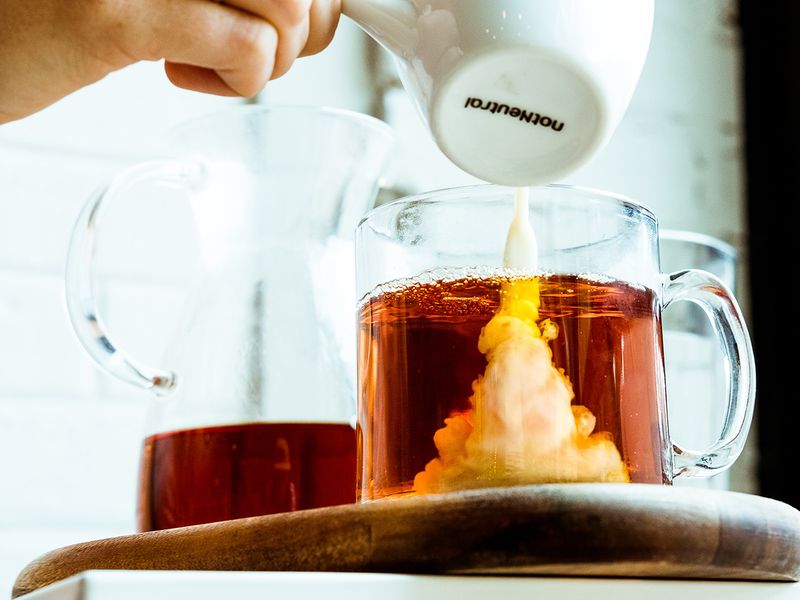
Let’s keep it simple. Don’t put evaporated milk. Evaporated milk often diminishes the flavour and body of the tea, thereby compromising on quality. Rule number six, folks.
“In case you do want milk in your tea, just add a teaspoon of milk and adjust the sweetness according to your liking. Try not to put a lot of it because we do not want to overpower the flavour of tea with milk and sugar,” added Gupta.
The art of food pairing with tea
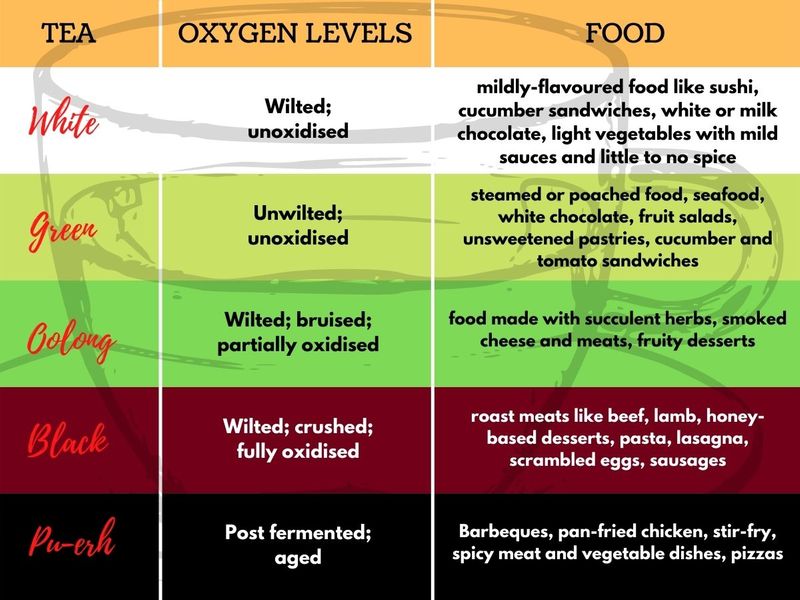
Of course, with great food comes an even greater cup of tea. The perfect combination must complement each other because balance is key. Rule number seven.
“Since tea tasting is an experience that involves all of your senses – look, smell, taste – start with your basic senses and develop your palate from there. Which is why there are two ways you can pair tea with food… the first, find a tea that has the same ingredients to enhance its flavours – for example, white gold tea is great with Normandy apple tart and napoleon tea goes wonderfully well with caramel macarons. The second, a balance of flavours – for example, earl grey fortune tea infused chocolate macaron and sauté of beef infused with spicy Singapore breakfast tea,” said Bouqdib.
“With white tea, sushi or anything non-spicy such as cucumber and tomato sandwiches, crackers, and so on are a great combination. Since green tea is a little more oxidised compared to white tea, foods such as pasta and risotto work well. For oolong, seafood works best and for black – which has been most oxidised – anything spicy or roasted like beef or lamb, tastes best.

In case you are someone who likes pu-erh compared to other teas, you can eat foods that are rich in fat, spicy or garlicky. And since pu-erh is compressed and tastes best when aged, you could sip it while devouring a barbeque or roasted meat
“In case you are someone who likes pu-erh compared to other teas, you can eat foods that are rich in fat, spicy or garlicky. And since pu-erh is compressed and tastes best when aged, you could sip it while devouring a barbeque or roasted meat,” said Gupta.
“The golden or thumb rule to follow is – the lighter the tea, the lighter the food,” she added.
Tea flushes
Have you heard of first flush, second flush and autumn flush? Flushes, when it comes to tea, are often used to determine the character of the tea. And by character, we mean the taste, appearance and body of the tea.
The term ‘flush’ is usually used to describe the various kinds of tea from mountainous regions, especially in areas such as Darjeeling in India and Nepal. In countries such as Japan and China, the term used is spring oolong, sencha and pre-qingming, respectively.
The tea leaves from a first flush are often brought in during the months of March to April. They are quite green in colour that it is often mistaken for green tea. Once placed in a cup, the water turns into a pale hue of amber to a golden yellow and has an astringent flavour.
Second flush on the other hand, are the products of an early summer. Not only are the leaves darker in shade but give out a darker shade of amber and can have a taste which ranges from fruity to nutty, depending on the tea of your choice. A second flush is best experienced with Darjeeling tea, which is often known as the “champagne of teas”, especially since it is said to resonate the most with Muscatel grapes.
Autumn flush tea leaves are quite similar to second flush tea leaves, although they are produced in the months of October to November. They are quite lighter when compared to the second flush in terms of strength, but comes with a coppery hue. It has a spicey, sweet note.
Each flush is unique in its own way, which is why figuring out the flavour to your favourite kind of tea is important. Rule number eight.
Etiquettes to drinking tea
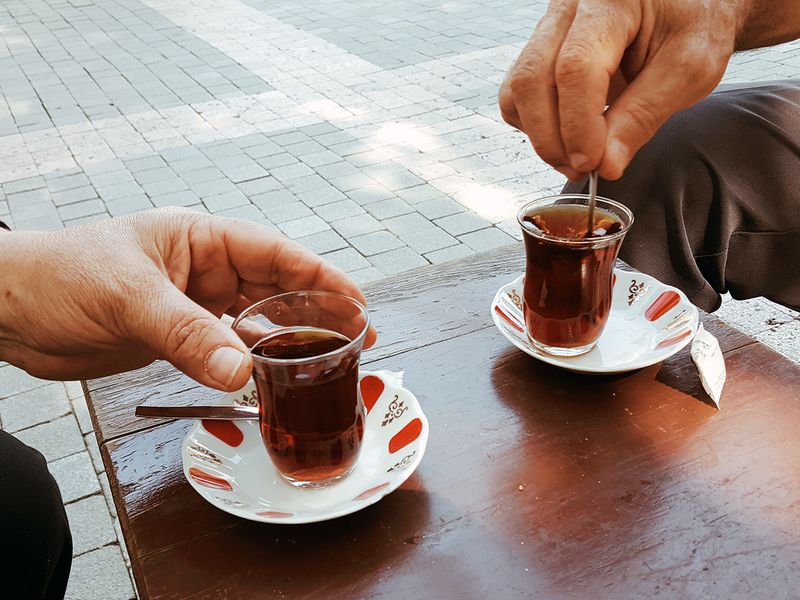
Slowly sipping your tea and relishing it is the key to every good cuppa. But there are certain etiquettes to be followed, which differs from country to country. This is rule number nine.
“Tea is the reflection of every culture and civilisation; its essence must always be respected, yet it must be adapted to local tastes and taste buds. Everything must be taken into account to get the best out of tea - climate, water, atmosphere, and the [cultural] sensitivity of a given nation to flavours and accompanying dishes. It is important to monitor the amount of tea used, the temperature of the water, and the exact steeping time, tea by tea. In this manner, one can be certain to enjoy the finest tasting experience, since each tea requires special know-how. Before tea is served, the leaves should always be removed, so that the delicate flavour remains consistent from the first cup to the last,” said Bouqdib.
“If you’re in the comfort of your own home, tea can be consumed however you like. But there are certain ways to drink them if you are in a foreign land. For example, when served white in China or in a Chinese restaurant, it is key to drink your tea slowly and if you don’t want a refill, leave it halfway. This signals your server that you’ve had enough tea and you’ve enjoyed it. Etiquettes around holding your cup are also important – never stick your little finger out while holding the handle of the teacup and always place the saucer on the table, unless you are in India – then you can drink your tea straight out of the saucer itself!
“Of course it varies from region to region, so be careful to do your research before drinking your cuppa,” added Gupta.
Identifying your tea
When it comes to choosing your flavour of tea, it is just as important as choosing a perfume signature to you. That being said, it is best recommended that you leave an open mind every time you sip a different blend of tea considering there are over 800 varieties (and still counting) of the same.
“It is your personal choice and it is something you have to nurture over time,” said Gupta.
“Like an haute couture fashion designer, we understand the evolving tastes of the modern tea drinker and develops special varieties created in collaboration with the world’s most renowned estates. And beyond the exceptional flavours in the teacup, tea is a journey and a discovery of a wonderful heritage and tradition, an experience like no other that will bring people back, time and again, in search of the intangible qualities,” added Bouqdib.
Benefits, benefits and more benefits
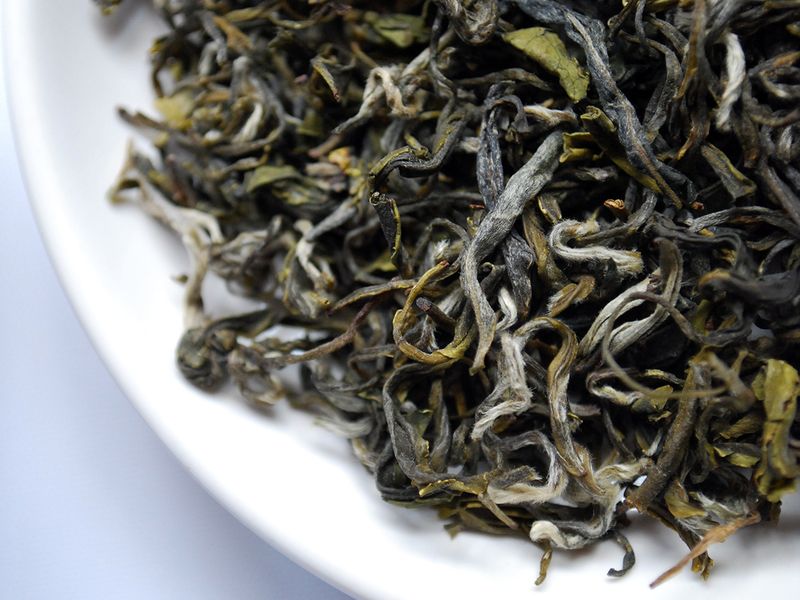
According to healthline.com, drinking tea regularly comes packed with benefits especially since it has antioxidant properties, improves gut health, and regulates blood pressure among other things.
“Black teas are bold in flavour and contain a higher level of theine (caffeine). They are a great energy booster for the morning and as accompaniment to a hearty breakfast. Black teas also improve digestion, drain the body of excess fluids and are very effective against bodily fatigue. Red tea, or rooibos, is produced from a bush known as the Aspalathus linearis in South Africa. Teas such as Red of Africa Tea and Eternal Summer Tea release a sweet flavour that calms the post effect of spicy food. Red tea is also said to relieve headaches, digestive problems and insomnia.
“Blue teas such as Ti Kuan Yin Superior and Milk Oolong, on the other hand, aid the detoxification process by promoting digestion in the body, and helps to fight cholesterol and soothe the sated taste of oily food. “Green teas are also rich in zinc, vitamin C and have anti-inflammatory and antioxidant properties. They make an excellent pairing to balance rich and sweet flavours.
“White teas are relaxing as it is very low in caffeine and are perfect for calming the soul. They contain the highest concentration of polyphenols and anti-oxidants, and helps to relax the mind and body as they are known to lower your body temperature and stimulate the immune system,” said Bouqdib.
And finally, here’s rule number ten. Drinking tea is an art form by itself. Each note plays an important role and contributes to your palate, opening your mind to the wondrous possibilities of a limitless drink. So take your time, relish every sip and find your perfect match.
Got a few tea recipes up your sleeve? Tell us about it on food@gulfnews.com



